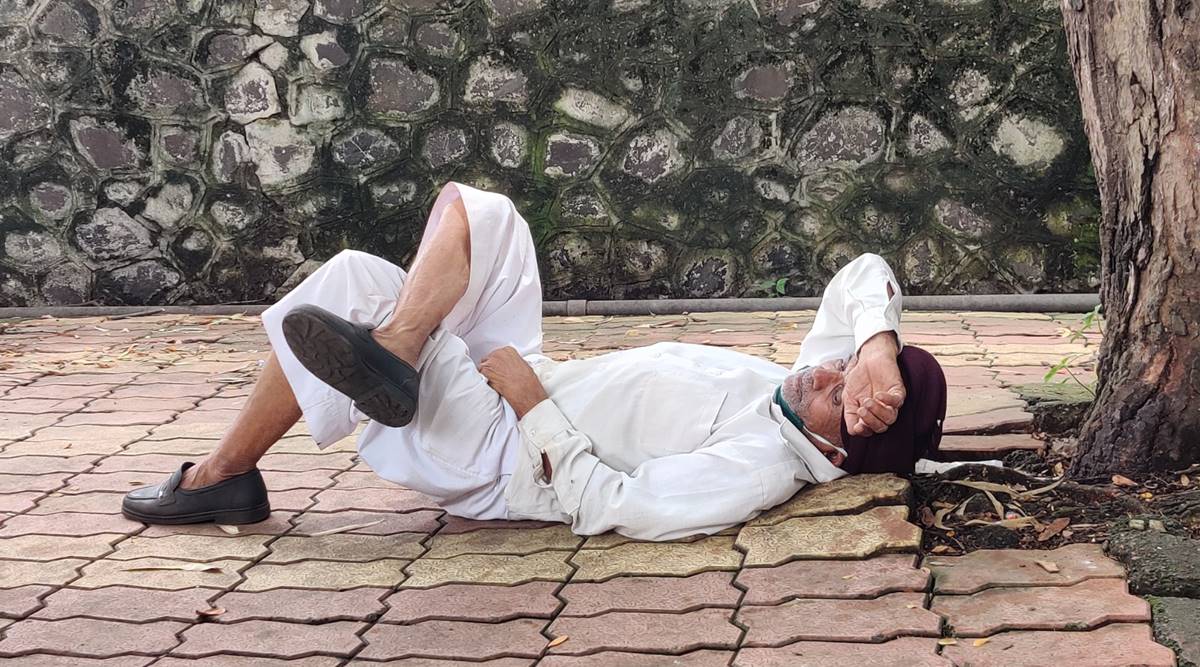 A man resting under a tree outside the hospital. (Express photo)
A man resting under a tree outside the hospital. (Express photo)For three days earlier this month, 65-year-old Kashabha Kumbhar lay outside the Karad Sub-District Hospital as his family, which had made its way there from a village 20 km away, hunted for a hospital bed. It was only when Kumbhar turned critical that the hospital admitted him on September 10.
The Karad hospital had been converted into a Covid facility in March, but as cases lagged, had gone back to taking in other patients. Now, as coronavirus spreads to rural areas, hospitals like Karad’s in Maharashtra are struggling. Again declared Covid-only this month, the Sub-District Hospital has 45 beds and none in ICU due to the lack of an intensivist and oxygen tank.
Accounting for 54% of the state’s 11.23 crore population, rural Maharashtra had only 16.5% of its coronavirus cases till mid-July.
As the lockdown lifts, the graph has been rising, and now, at 4.02 lakh cases, Maharashtra rural regions make up 34.4% of its numbers.
Since September 1, Satara has recorded 16,000 cases, with Karad the epicentre. Says Karad Sub-District Hospital’s Medical Superintendent Dr Sheela Khairmede: “We did not expect cases to rise so suddenly.”
September has been particularly harsh for Maharashtra, which has consistently had the highest number of coronavirus cases in the country. Of India’s nearly 2 lakh new cases this month, 46% of them have been recorded in Maharashtra alone. With Mumbai being the initial epicentre, the state’s efforts were focused on the capital. As rural areas take a hit, the system is straining.
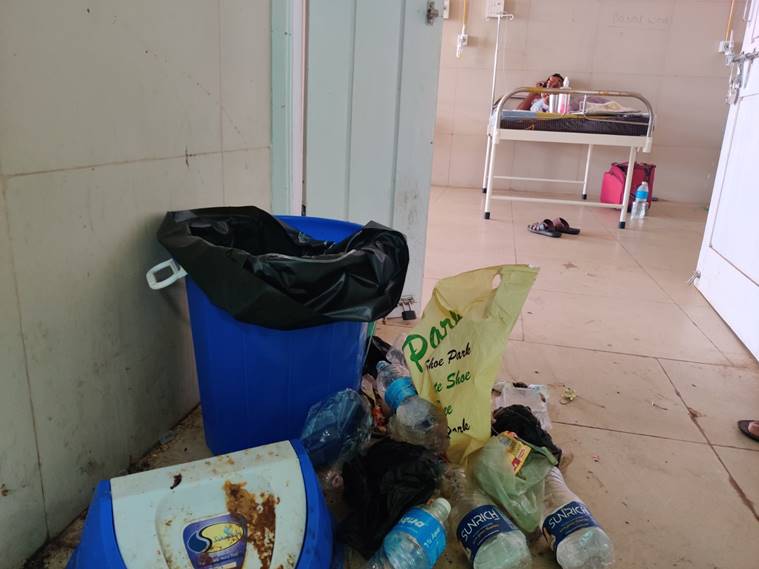 Garbage accumulates outside a ward. (Express photo)
Garbage accumulates outside a ward. (Express photo)
Satara saw its surge around mid-August, and its total numbers now stand at 30,037, half of them in Karad alone. The district has 471 ICU beds and 1,154 oxygen beds for over 8,700 active cases, including in 22 private hospitals converted into dedicated Covid facilities.
“We desperately need more private hospitals to participate,” says Civil Surgeon Dr Subhash Chauhan, while talking about plans for a 300-bed “jumbo facility” with a 20 kilo-litre oxygen tank.
At the private Krishna Medical College as well as the Satara Civil Hospital, which have the district’s only Covid-19 dialysis beds, there is a waitlist of two-three days. Civil Hospital has seven such beds. “We need one more dialysis unit,” Chauhan says.
“I get multiple calls a day for beds, my own relative is currently looking for one,” says corporator Vijay Wategaonkar, from regional party Lokseva Aghadi.
Dr Nagnath Dharamadhikari, in-charge of Covid at the Karad Sub-District Hospital, says, “Patients come gasping, but I can’t remove one patient from oxygen to help another.”
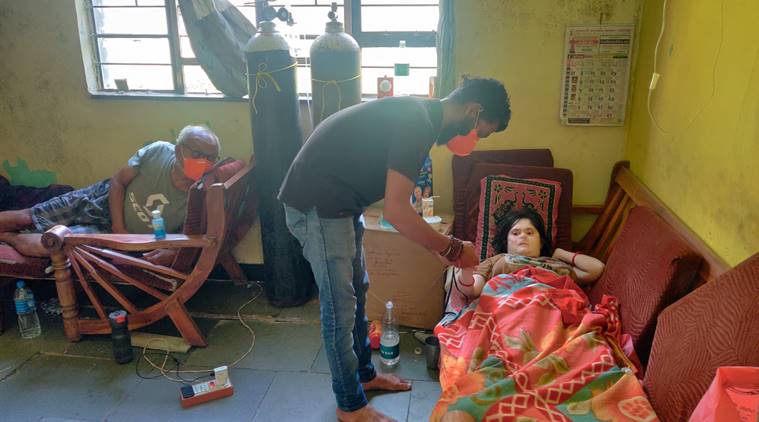 Locals in Satara have pooled in funds to buy at least 80 oxygen concentrators for patients unable to get a hospital bed. (Express photo)
Locals in Satara have pooled in funds to buy at least 80 oxygen concentrators for patients unable to get a hospital bed. (Express photo)
Locals in Satara have pooled in funds to buy at least 80 oxygen concentrators for patients unable to get a hospital bed. One of them is Poonam Badwe (29), who has Down Syndrome and was diagnosed with Covid-19 on September 7. The family says it couldn’t get a bed in five hospitals, even as Poonam’s oxygen saturation levels dropped below 50%. On September 8, the family reached out for help through WhatsApp, and locals arranged an oxygen cylinder at home.
Kumbhar had come negative in a Rapid Antigen test. While norms mandate a symptomatic person to be re-tested through RT-PCR, there was no follow-through by the government hospital. It was when his condition worsened that his son got him tested at a private lab, where he showed positive. Then began the wait in the Karad Sub-District Hospital compound.
Hambirao Yadav’s son Satish too made rounds first of hospitals in Karad and then Satara, after Hambirao contracted Covid-19 last week. Satish finally took his father, the sarpanch of Yeravale village, to Pune Military Hospital, 160 km away.
Satara Collector Shekhar Singh says the district will increase 1,000 isolation beds in the next few days. “Every week we are adding more private hospitals.”
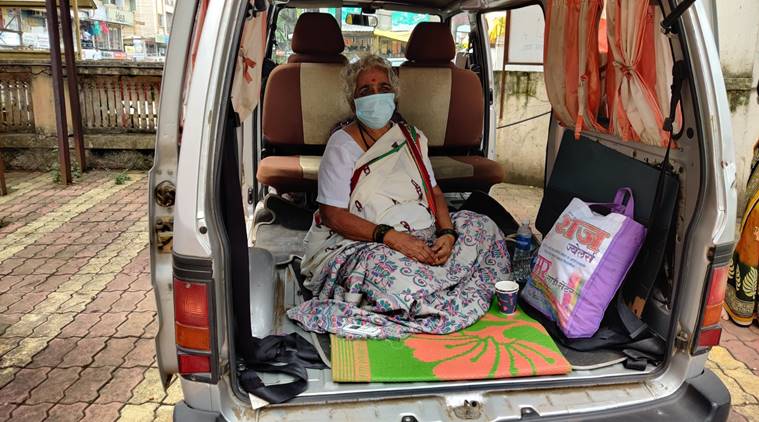
In Osmanabad district, locals raised Rs 1 crore to set up an RT-PCR laboratory back in April. The district was in green zone — meaning no or few cases — from March till May, during which, a senior district official says, only Covid Care Centres for mildly ill patients were set up. Since August 1, the district has recorded 8,955 cases, 89% of its total, which is when the scaling up of beds began. “Cases suddenly rose from July end,” says district health officer Dr H V Wadgave.
Osmanabad now has 1,010 oxygen beds, and plans to add 580 more. However, it did not plan for oxygen storage tanks, or ambulance demand (with a population of 16.6 lakh, it has 19 ambulances for Covid-19 cases).
Every day, the District Civil Hospital makes frantic calls to dealers for oxygen cylinders. Its requirement for oxygen is expected to increase from 300 to 550 cylinders per day by September end. Hasan Pathan, from Goraj Gases, an oxygen dealer, says, “The demand is huge and the supply has not increased.”
Wadgave says a plan to install oxygen tanks in two government hospitals is waiting for approval.
Osmanabad Collector Kaustubh Diwegaonkar says they are trying to ramp up testing. “In 60 villages which contribute to 35-40% of the burden, we are using primary health centres for early identification. We are also increasing the number of ambulances.”
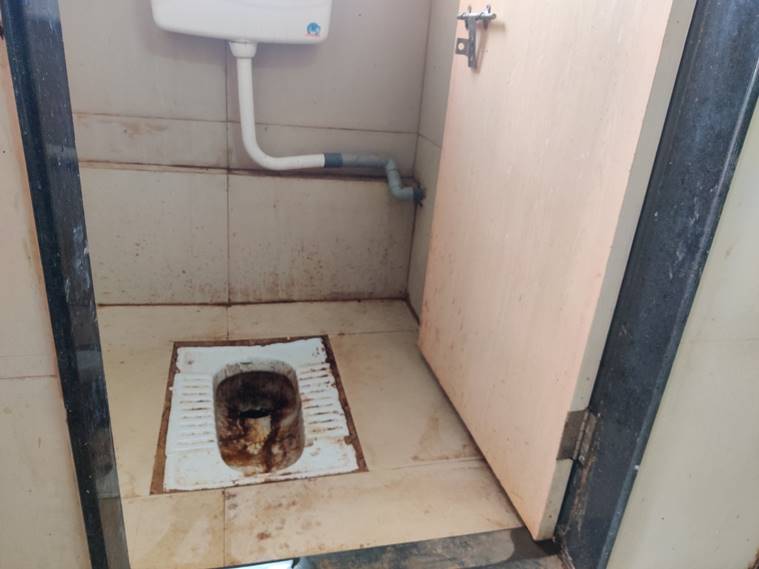 A toilet inside the Covid hospital. (Express photo)
A toilet inside the Covid hospital. (Express photo)
The problems the pandemic has brought forth further expose the gaps in Maharashtra’s health infrastructure. A 2019 Union Health Ministry report, released months before the first coronavirus case in the state, pointed to a 20% shortfall in PHCs and 37% in community health centres in rural areas. The state’s allocation for health has been stuck at around 4% of its expenditure for the past two budgets — lower than the national average.
Public health expert Ravi Duggal says that at Rs 1,400 per capita, the expenditure on health in Maharashtra is among the lowest in India (the national average is Rs 1,800-1,900 per capita). In rural areas, he adds, almost 70-80% of the budget goes into just paying salaries.
TOMORROW: Why doctors are unwilling to join rural hospitals
📣 The Indian Express is now on Telegram. Click here to join our channel (@indianexpress) and stay updated with the latest headlines
For all the latest India News, download Indian Express App.